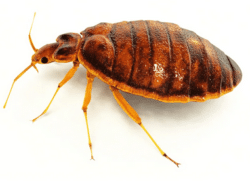
19 Jan Bed Bugs South Florida
South Florida, with its warm and humid climate, is a prime location for bed bugs to thrive. The warm temperatures in this region allow bed bugs to reproduce quickly and the high humidity helps to keep their eggs from drying out. Additionally, the high population density and large number of tourists in South Florida can contribute to the spread of bed bugs.
One of the major challenges in dealing with bed bugs in South Florida is their ability to quickly adapt to different environments. They can be found in a variety of settings, from homes and apartments to hotels, motels, and even public transportation. This means that bed bugs can easily spread from one location to another, making it difficult to contain infestations.
Another problem specific to South Florida is the presence of other pests that can be mistaken for bed bugs. For example, the nocturnal biting bug known as “no-see-ums” is commonly found in the region, and they can be mistaken for bed bugs due to their similar appearance and behavior. This can make it difficult to accurately identify and effectively treat an infestation.
To combat bed bugs in South Florida, it is important to take a multi-faceted approach. This may include regular inspections, the use of traps and monitoring devices, and the use of pesticides and other treatments. It is also important to educate the public about the signs of bed bugs, how to prevent infestations, and the importance of early detection.
In addition, it is essential to seek professional help if you suspect a bed bug infestation. A pest management professional will be able to accurately identify bed bugs and develop a customized treatment plan to effectively eliminate the infestation. They will also be able to advise on preventive measures to reduce the risk of re-infestation.
Bed bugs are small, reddish-brown insects that feed on the blood of humans and animals. They are known for their ability to reproduce quickly and for their tendency to hide in the crevices of beds, mattresses, and other furniture. One of the most important aspects of understanding bed bugs is understanding their biology, specifically their eggs and mating habits, as well as how they can spread diseases.
Eggs: Bed bugs lay small, white, oval-shaped eggs that are about the size of a pinhead. They lay their eggs in clusters, usually in the crevices of beds and other furniture. The eggs are sticky, so they tend to stay in place once they are laid. The eggs hatch in around 10 days, and the newborn bed bugs, called nymphs, look like small versions of the adult bugs. They will molt several times before reaching maturity.
Mating Habits: Bed bugs are known for their ability to reproduce quickly. Adult females can lay up to five eggs per day and can lay up to 500 eggs in their lifetime. Male bed bugs will often mate multiple times, and females can store sperm for later use, so a female can lay eggs for months after mating.
Spread of Diseases: While bed bugs themselves do not spread diseases, they can serve as vectors for pathogens. They can pick up pathogens when feeding on an infected host and then transmit them to a new host when they feed again. This is a concern for people living in overcrowded conditions or in places where hygiene is poor. Bed bugs can also cause allergic reactions in some people, and their bites can become infected if they are scratched open.
In conclusion, bed bugs are a serious pest problem, and understanding their biology is crucial for effectively controlling them. Their quick reproduction and ability to hide in small crevices make them difficult to eliminate, but with proper knowledge and techniques, it is possible to get rid of them. It’s always important to take the necessary precautions and seek professional help if you suspect a bed bug infestation in your home.



No Comments